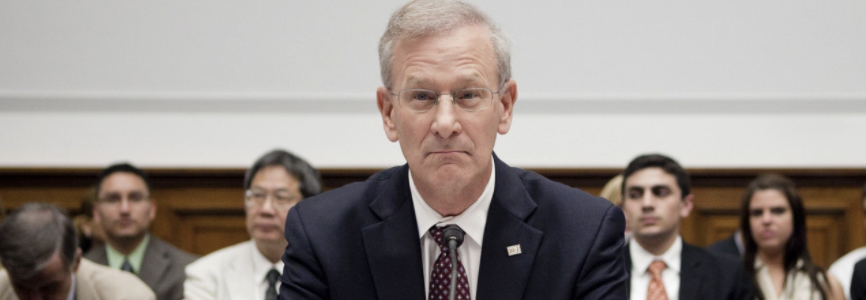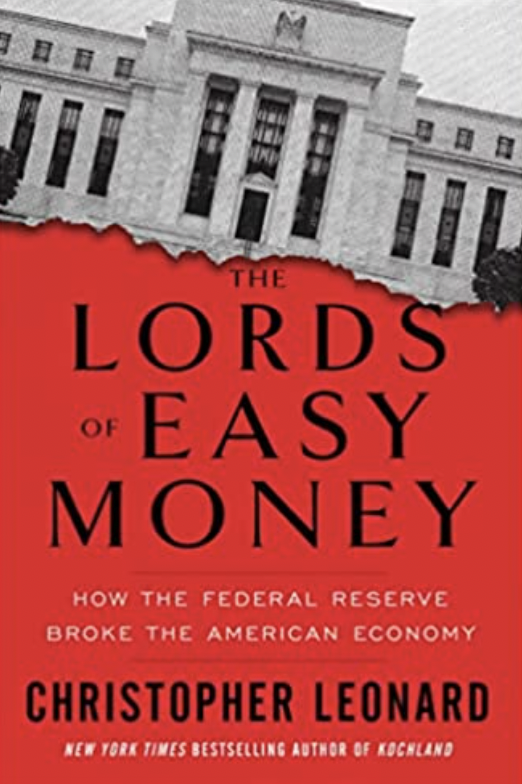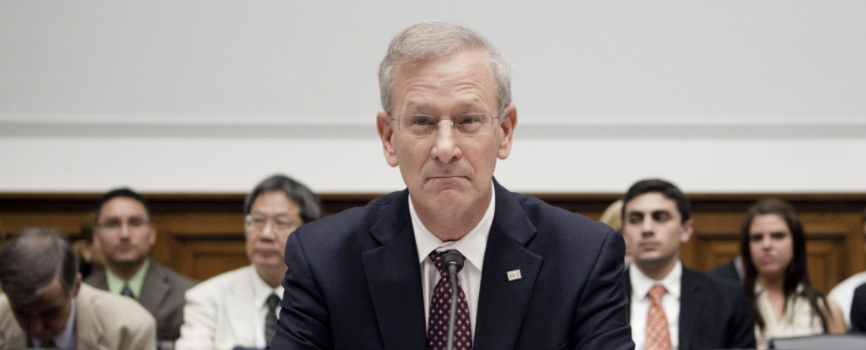
Age of ZIRP: Fed’s fateful decision to turn the liquidity to spigots


Christopher Leonard, the New York Times business journalist, infiltrates the Federal Reserve to show how its policies steered by Chairman Jerome Powell over the past ten years have accelerated income equality and put America’s economic stability at risk. The press credited the Fed when the economy grew and also when the economy imploded in 2008, they got credit for rescuing the economy.
The Lords of Easy money is the shocking and riveting tale of how the Fed intervened on November 4, 2010, to reshape the American economy for the worse, and called quantitative easing in just short years, the Fed more than quadrupled the money supply with one goal, to encourage banks and other investors to extend more risky debt and imperiling the American economy. The experiment would produce few real jobs, with long-term risks that were hard to measure, then the Fed found itself trapped. Once it printed all that money, there was no way to withdraw from circulation. Although the Fed tried several times, only to see market start to crash, at which point the Fed turned the money spigot back on. That’s what it did when Covid hit, printing 300 years’ worth of money in two short months.
Ten years on the gap between the rich and poor has grown dramatically, stock prices are trading far above what’s justified by actual corporate profits, corporate debt in America is at an all-time high, and this debt is being trade by big banks on Wall Street, leaving them vulnerable – just as they were during the mortgage boom. Middle-class wages have already budged in a decade, and consumers are buried under credit card debt, car loan debt, and student debt.
Christopher Leonard focuses on the president of one of the 12 regional Fed banks, and not a very important bank, Thomas Hoenig, a plumber’s son from Fort Madison, Iowa, who from 1991- 2011 presided over the Federal Reserve Bank of Kansas City. Hoeing was not one of the elites who seem to reign over the Beltway like the Ivy League types who served as Fed chairs – Ben Bernanke ( MIT), Janet Yellen ( Yale), and Jerome Powell (Princeton).
Hoenig attended Catholic schools, enlisted in the Army, serving as an artilleryman in Vietnam, and got his Ph.D. in economics from Iowa State. In 1973, he went to work at the Kansas City Fed. He stayed for 38 years.
As bank president, defying the Fed’s unspoken traditions, repeatedly voted against Bernanake who was prescribing unprecedented monetary medicine to revive the slow-growing economy.
The Federal Reserve embraces two unequal hierarchies: the Board of Governors in Washington and the regional banks. When the Fed was created in 1913, the banks were designed as a check on power at the centre (and on Wall Street). The fear of centralism sprang form populists such as William Jennings Bryan, who hankered for easier credit for farmers.
While Bernanke had been schooled in the Great Depression, when the Fed had failed to act with sufficient vigour, after the 2008 financial crash, data-driven Bernanke was all vigour, as he lowered interest rates to near zero percent and embarked on large bond-buying campaigns (quantitative easing) to revive investment and spending. Hoeing saw closeup how painful it was when asset bubbles popped and waves of banks in his territory failed.
This Fed’s policy planted the seeds for future bubbles and aggravated economic inequality. Since investment values rise when interest rates fall, zero percent rate were good for Wall Street, but, putatively, did not do much for folks in Fort Madison.
According to Leonard “Each dollar created by quantitative easing put pressure on the dollars already existed, like water pushing into an overflowing pool,”
If Texas Instruments was repurchasing shares, its investors were pocketing cash. Either those investors were spending cash, stimulating business, or they were reinvesting it in companies that were creating jobs, Sooner or later the money had to go somewhere.
The Kansas City banker, Thomas Hoenig, in 2010, the single dissenting vote on the policy setting Federal Open Market Committee to stand against the US central bank’s quantitative easing programme. After the financial crisis, he broke out of the traditional Fed consensus and risked public fury and criticism from his peers, to sound the alarm about how a radical experiment in monetary policy, which involved pumping unprecedented amounts of money into the US economy, ever more risky behaviour on Wall Street. We are all speculators now, not only the politics and macroeconomics that drove Fed decision-making, but also its real-world fallout.
More than a decade on from the Fed’s fateful decision to turn the liquidity to spigots on full-blast, ultimately increasing its balance sheet from $2.3tn in 2010 to a whopping $7tn by 2020, most investors and even plenty of average people are aware that the central bank has, in some profound way manipulated the market, in a world where teenagers talk about “buying the dip”, retail traders on the popular Robinhood app push meme stocks into the stratosphere, and pension funds desperate for yield pour money into cryptocurrencies?
The age of ZIRP, ( Zero Interest rate policy), but Hoeing’s era in 1970s years of epochal inflation and bubbles in oil, precious metals and farmland.
Leonard writes, “ The central bank has always held a crucial but fraught position in the US political system, which was controlled in Washington DC, but also decentralised. It was given total control over the money supply, but did not replace the private banking system. It was insulated from voters, but broadly accountable to politicians”.
Hoenig said “ We’ve built an entire economic system around a zero rate, not only in the US but globally. It’s massive, Now think of the adjustment process to a new equilibrium at a higher rate. Do you think it’s cost-less? Do you think that no one will suffer? Do you think there won’t be winners and losers? No way.”
The Lords of Easy Money: How the Federal Reserve Broke the American Economy by Christopher Leonard, Simon& Schuster $30, 362 pages.
